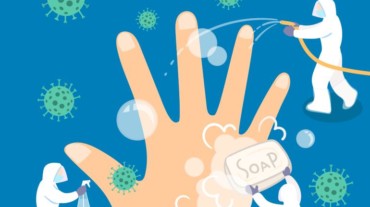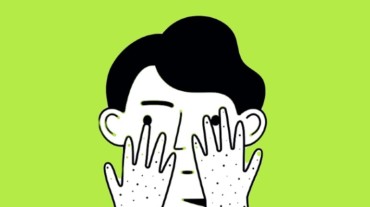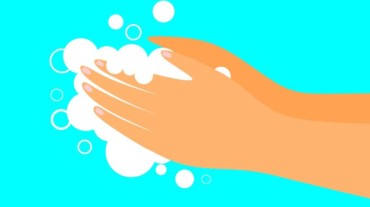
Ten more cases of coronavirus have been reported in India since morning and unfortunately, this number is not going to go down anytime soon–especially, if we don’t take proper measures.
A lot of doctors and health agencies have been vociferous about the dos and don’ts to protect yourself from the scare of COVID-19.
Although washing hands frequently is the best possible way to prevent this infection, there is one thing that we tend to forget–sanitizing our hands every time we touch a surface. And now there is enough evidence to claim that coronavirus can also last on a surface for hours.

The novel coronavirus infectious particles can remain stable in air and linger on solid surfaces for spans ranging from several hours to days, suggests a new study.
This study was conducted by the researchers of National Institutes of Health, CDC, UCLA and Princeton University and was published in The New England Journal of Medicine.
Coronavirus can last on metal surfaces as well
The scientists found that severe acute respiratory syndrome coronavirus 2 (SARS-CoV-2) was detectable in aerosols for up to three hours, up to four hours on copper, up to 24 hours on cardboard, and up to two to three days on plastic and stainless steel.
The results provide key information about the stability of SARS-CoV-2, which causes COVID-19 or novel coronavirus infection, and suggests that people may acquire the virus through the air and after touching contaminated objects.
Also, watch:
The study information was widely shared during the past two weeks after the researchers placed the contents on a preprint server to quickly share their data with colleagues.
Select Topics of your interest and let us customize your feed.
PERSONALISE NOWSARS was eradicated by taking measures like isolation and the same can happen with coronavirus
The NIH scientists, from the National Institute of Allergy and Infectious Diseases’ Montana facility at Rocky Mountain Laboratories, compared how the environment affects SARS-CoV-2 and SARS-CoV-1, which causes SARS. SARS-CoV-1, like its successor now circulating across the globe, emerged from China and infected more than 8,000 people in 2002 and 2003.
SARS-CoV-1 was eradicated by intensive contact tracing and case isolation measures and no cases have been detected since 2004. SARS-CoV-1 is the human coronavirus most closely related to SARS-CoV-2.
In the stability study, the two viruses behave similarly, which unfortunately fails to explain why COVID-19 has become a much larger outbreak.
The NIH study attempted to mimic virus being deposited from an infected person on everyday surfaces in a household or hospital setting, such as through coughing or touching objects. The scientists then investigated how long the virus remains infectious on these surfaces.
Also, listen:
The scientists highlighted additional observations from their study which said that if the viability of the two coronaviruses is similar, why is SARS-CoV-2 resulting in more cases.
People unknowingly might be spreading this virus, say researchers
Emerging evidence suggests that people infected with SARS-CoV-2 might be spreading a virus without recognizing, or prior to recognizing, symptoms. This would make disease control measures that were effective against SARS-CoV-1 less effective against its successor.
In contrast to SARS-CoV-1, most secondary cases of virus transmission of SARS-CoV-2 appear to be occurring in community settings rather than healthcare settings.
However, healthcare settings are also vulnerable to the introduction and spread of SARS-CoV-2, and the stability of SARS-CoV-2 in aerosols and on surfaces likely contributes to the transmission of the virus in healthcare settings.

The findings affirm the guidance from public health professionals to use precautions similar to those for influenza and other respiratory viruses to prevent the spread of SARS-CoV-2.
Also, avoid touching your face, eyes, and nasal area again and again.
So, don’t touch unknown surfaces with naked hands as you never know that they might be infected.